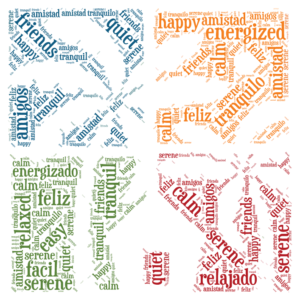Nicaragua – Quick Facts
Quick Facts
Nicaragua Facts:
Official Name:
Republic of Nicaragua
 Location:
Location:
Central America, between the Caribbean Sea (East), the Pacific Ocean (West), Honduras (North) and Costa Rica (South). Geographic coordinates: 13:00 North, 85:00 West.
Area:
130,668 sq. km. (50,451 sq. mi.). Slightly larger than the state of New York, Nicaragua is the largest country in Central America.
Climate:
Tropical in the lowlands, cooler in the highlands. Temperatures vary from 81-90°F (27-32°C) during the rainy season from May to October, and from 86-95°F (30-35°C) during the dry season from November to April. The climate in the western region of the country between the lakes and the Pacific Ocean is dry and has little precipitation. The eastern part is hot, humid and rainy.
Topography:
The extensive Atlantic coastal plain rises to the central interior mountains, which drop off to a narrow Pacific coastal plain interrupted by volcanoes. Highest elevation: Mogotón 2,107 m. (6,912 ft.). Nicaragua claims the largest expanse of tropical rainforest north of the Amazon, covering much of the northern and eastern regions. The mountains and the western part of the country are somewhat more arid. There are many lakes and rivers accounting for some 9,240 sq. km. (3,568 sq. mi.) of the country’s total surface area. Lake Nicaragua, Central America’s largest, covers more than 8,000 sq. km. (3,089 sq. mi.), while Lake Managua reaches more than 1,000 sq. km. (386 sq. mi.).
Getting Around:
Getting around can be easy, enjoyable and safe throughout Nicaragua. According to statistics by Interpol and the United Nations, Nicaragua is one of the safest countries in the Americas, and the safest in Central America.
Colonial cities such as León and Granada are more pedestrian- friendly than larger cities such as Managua. Taxis are plentiful and relatively inexpensive throughout the country. It is advisable to use officially registered taxis, which have red license plates (the numbers should be legible), or licensed tour guides. Radio-dispatched taxis are available at the airport and major hotels. Major rental car companies are located at the airport and in other locations. Visitors can use a driver’s license for thirty days after entering the country. Inter-city buses and rental cars are also plentiful.
Principal Cities:
Managua is the capital and the nation’s largest city, with a population of 2.2M (2010 estimate). Other important cities include: León, Granada, Jinotega, Matagalpa, Chinandega, and Masaya.
Population:
Nicaragua’s population of 5.9M (2013 estimate) is concentrated mostly in the western regions of the country. The largest ethnic population is mestizo, or mixed European and indigenous, with smaller groups of whites, blacks of Jamaican origin, and other indigenous minorities.
The culture of Nicaragua reflects the mixed Ibero-European and Indian ancestry of the majority of its people.
Language:
Spanish is the official language and is spoken by the vast majority of Nicaraguans. English and indigenous languages are used along the Caribbean coast and in parts of the Atlantic coastal plain. Many Nicaraguans also speak some English.
Religion:
58% Roman Catholic; 42% other religions.
Currency:
Córdoba (C). Exchange rate: Approximately C$28.5 per US dollar (May 2016). Most establishments will accept payment in US dollars. Major credit cards are typically accepted in hotels, restaurants, and stores in both urban and tourist areas. Currency exchange can be transacted at most banks and hotels. The Córdoba is sometimes also referred to as the Peso.
Electricity:
110 volts/60 cycles
Airports:
Managua International Airport and three domestic airports (Bluefields, Puerto Cabezas and Corn Island). These airports are managed by the International Airport Management Authority (www.eaai.com.ni). Granada also has a small regional airport that services flights from Costa Rica.
Airlines:
Nicaragua is served by a variety of international, regional, and domestic airlines. American Airlines (nonstop from Miami); Continental Airlines (nonstop from Houston); AviancaTaca (flights to Miami, Los Angeles, New York, Canada, Mexico City, and Central America); Copa Airlines (daily flights to Panama City and other Central American cities, and USA); Aerocaribbean (one weekly flight to Cuba); Delta Airlines (nonstop from Atlanta); Spirit Airlines (nonstop from Ft. Lauderdale.) Domestically, La Costeña flies to Bluefields, Corn Island, and Puerto Cabezas and other localities. Nature Air flies from Managua to Costa Rica and Panama.
Taxes:
The entry tax is US $10 payable in US dollars or Córdobas. Checks and credit cards are not accepted. Sales tax: 15% on all purchases.
Tipping:
Airport/hotel baggage handlers: US $1.00 per bag is acceptable. For restaurants and other services, 10% of value of service is customary but not obligatory.
Visa Requirements:
All visitors need a passport valid for at least six months to enter Nicaragua. For more information please visit our website: www.visitanicaragua.com
Water:
Tap water in Managua and all major cities and municipalities is considered safe to drink. Outside of major areas, bottled water is advised.
Banks:
Hours of operation:
Monday to Friday from 8:30 a.m. to 4:30 a.m.
Saturday from 8:30 a.m. to 12:30 a.m.
Shopping:
Nicaragua offers a wide variety of shopping options, ranging from local arts and crafts to major shopping centers. Handicrafts and souvenirs may be found at Roberto Huembes Market in Managua, the arts and crafts market in Masaya, as well as in San Juan de Oriente and the Catarina Villages. Shopping centers such as the Galería, Metrocentro, Plaza Inter, Centro Comercial Managua, are located in the capital city. Duty Free shopping is available at airports and borders.
Things to do:
Eco-tourism; adventure and sports activities, including surfing, deep-sea fishing, swimming, snorkeling, kayaking, diving, volcano sand-boarding; historical and agricultural sites; cultural activities; agritourism; volunteerism; nightlife.


